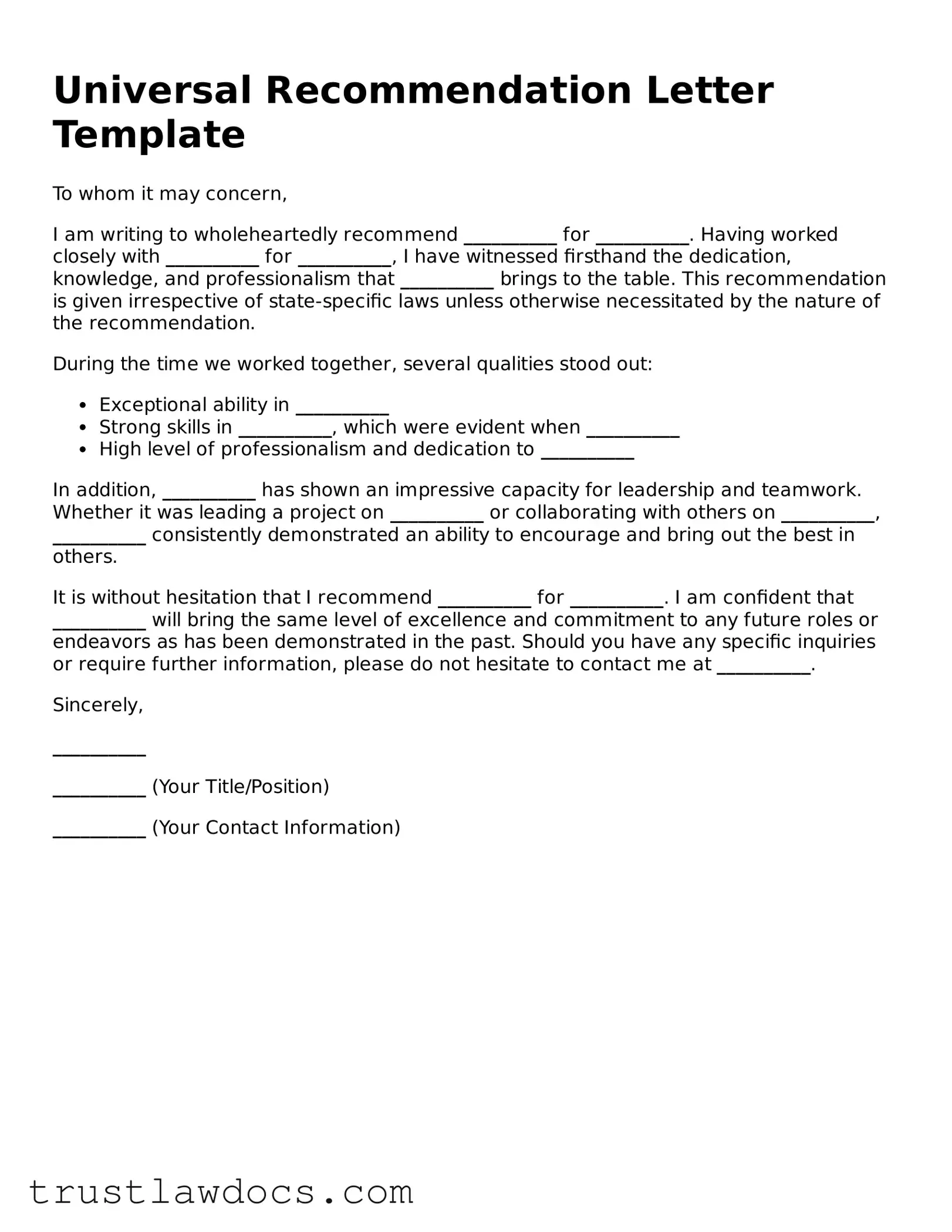What is a Recommendation Letter Form?
A Recommendation Letter Form is a document used by individuals to provide a formal recommendation for someone they know professionally, academically, or personally. This form typically outlines the person's qualifications, achievements, character, and potential for future success. It's often used in situations like job applications, college admissions, or scholarship considerations.
Who should complete the Recommendation Letter Form?
The form should be completed by someone who knows the individual well enough to provide a meaningful and comprehensive evaluation of their abilities and character. This could be a supervisor, teacher, mentor, coach, or professional colleague. The key is choosing someone with a positive relationship and insightful perspectives on the individual's strengths and accomplishments.
What information needs to be included in the form?
The form should include specific examples of the individual's skills, achievements, and character traits that make them stand out. It should also detail the relationship between the recommender and the individual, the duration of their acquaintance, and any relevant contexts, like projects or achievements where the individual demonstrated exceptional qualities.
How long should the Recommendation Letter be?
The length can vary, but it is generally recommended to keep the letter to one page. This ensures the document is concise and focuses on the most important and impactful information, making it easier for the reader to assess the individual's qualifications and potential.
Can a Recommendation Letter Form be submitted online?
Yes, in many cases, Recommendation Letter Forms can be submitted online. This is especially common for educational institutions or employers who have digital application processes. It is important to check the specific submission guidelines of the institution or company to ensure compliance.
Is there a deadline for submitting a Recommendation Letter Form?
Deadlines can vary significantly depending on the context in which the recommendation is being used. It is crucial to be aware of and adhere to any specific deadlines for applications or submissions to ensure the letter is considered as part of the evaluation process.
Can I see the Recommendation Letter before it's submitted?
This depends on the preferences of the individual writing the letter. Some may choose to share the letter with the individual they are recommending for transparency or feedback. However, others might opt to keep the content confidential to maintain the integrity of their assessment. Always respect the decision of the recommender regarding this matter.
